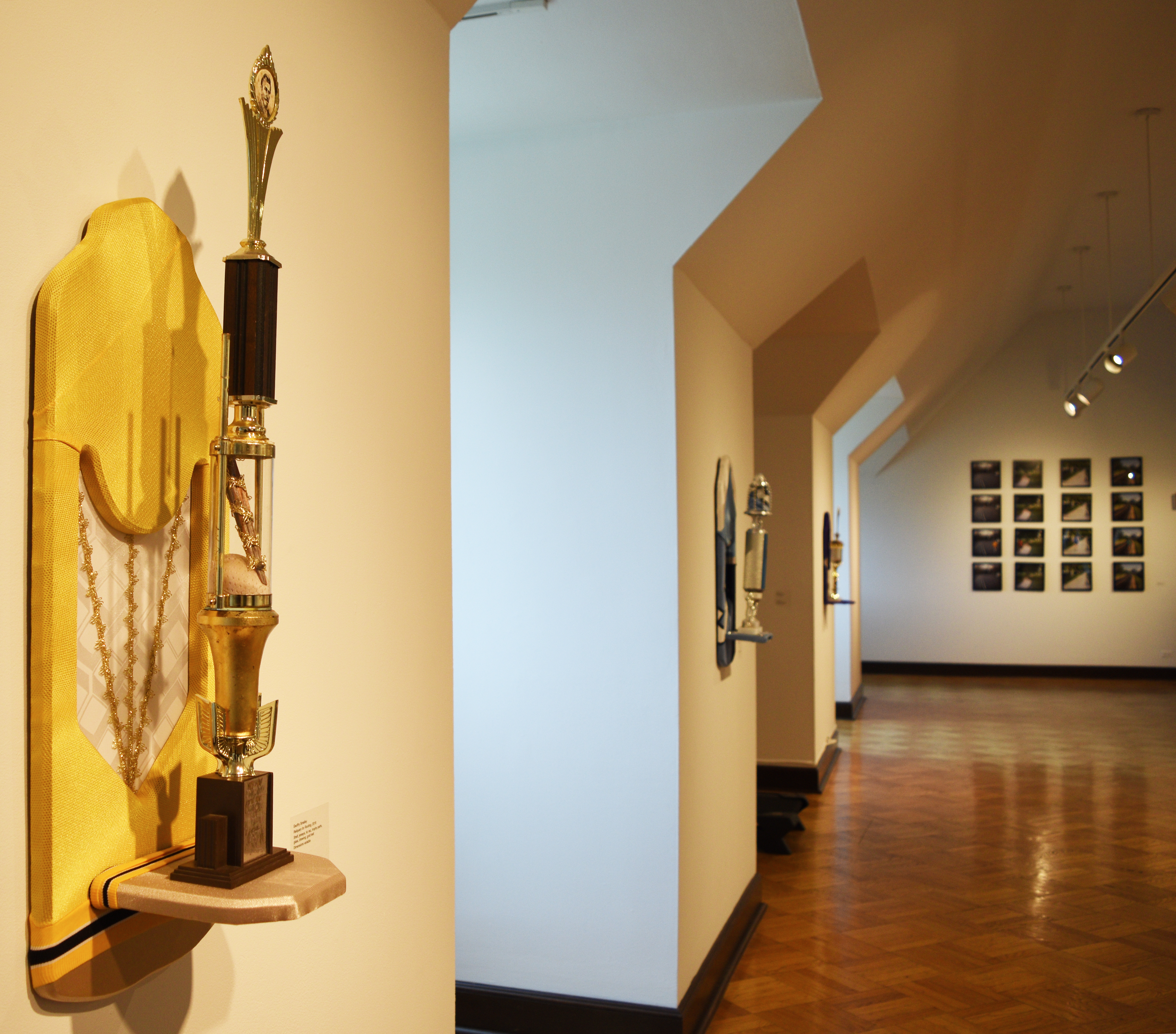
Erik Grosskopf
contributing writer
Art and athleticism are two things that are traditionally pitted against each other in popular culture. There’s always a star football player picking on the introverted, creative type. However, with the O’Connor Art Gallery’s first show of the new school year, three artists display works that show the relationship between the two. Bryan McVey, Geoffry Smalley, and Wendy White exhibit pieces allowing the viewer to engage with the relationship between sport and art, a relationship you’ll walk away from thinking to be a lot closer than what you thought.
The Artist and the Athlete exhibition displays pieces across several different mediums from photography, painting, and even interactivity with Bryan McVey’s “Measuring Distance.” With McVey’s, “The Loneliness of Endurance,” his dynamic uses of subject and space is evident as the viewer is met by a large 13×13 square photo series. Each of the four columns that make up the series is a different collection of photos, each one showing a single runner moving through the environment around them. McVey effectively builds a relationship between the idea of endurance and loneliness that the runner puts themselves through to keep pushing through different environments. The endurance and loneliness are part of the art making process; in this case, being on the other side of the camera. The piece, as well as his others, focus on this representation of the passing of time that both athletes and artists experience as they go about their work.
Wendy White’s “Sponsorship Wall,” brings together the recognizable logos of athletic brands like Nike, Puma and Adidas with her 24 piece acrylic, splatter-like wall art. The brands appear in a white paint color seemingly splattered onto an array of pastel colors. While each canvas is separated and hung individually, the viewer can tell they were once a singular, cohesive piece of art as the splatters dripping from the logos carry across onto neighboring canvases. White is clearly showcasing these iconic brands associated with athletics, perhaps hoping to bring up each individual viewer’s own experiences or ethos of each brand represented. Or perhaps she is speaking to the relationship between the commercial importance and role of the corporate branding and identities of these large companies that seemingly help fund professional sport in America through billion dollar sponsorship deals.
Another series was Geoffry Smalley’s series of “Reliquaries.” Smalley expands on his interests between the relationship of American development, religious appropriation and the rise of the professional sport industry. He also builds on the idea of athletes being idolized or portrayed as heroes. Within three separate pieces, Smalley takes pieces of cloth from athletic jerseys and places them inside and onto a trophy to parallel objects within churches that contain Saints. He expands on this idea of athletics being a sort of religious institution within America in his two other pieces in the show, “Catskill Creek” and “View of Miller Valley.” Both of these pieces feature a staple of American culture, the sports stadium, set within the unspoiled landscape of a creek and valley respectively. Smalley is hoping to convey how these stadiums and arenas that our glorified and romanticized athletes play in, are the equivalent to a cathedral. It’s an interesting metaphor to think about, but Smalley successfully represents the idea across all of his works.
The Artist and the Athlete is a unique take on an even more unique relationship. All pieces successfully touch on aspects that connect the athlete and the artists, while giving the viewer something to think about.
groserik@my.dom.edu
